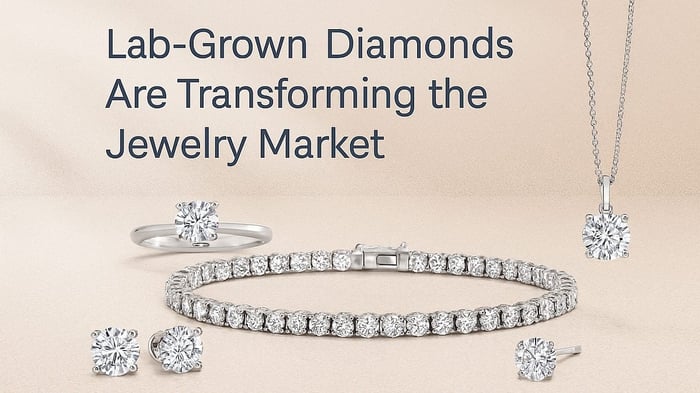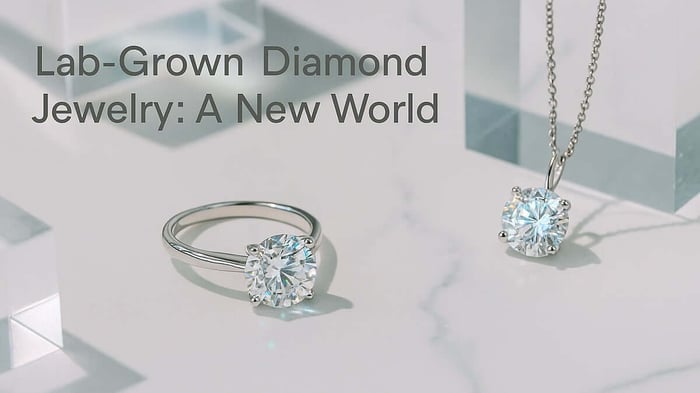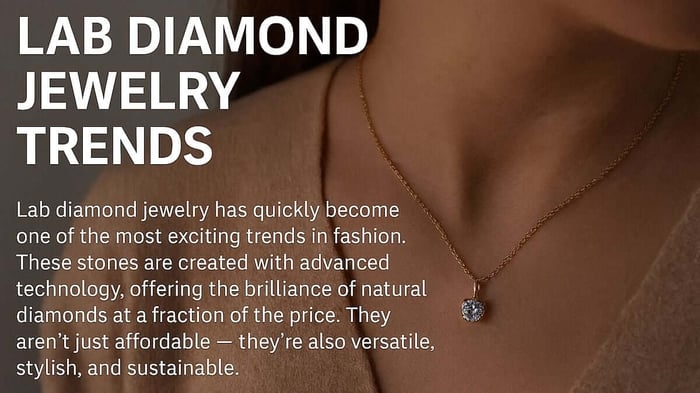Table of Contents
- Industry Snapshot & Growth to Date
- Market Projections & Key Drivers
- How Lab Diamonds Are Impacting the Natural Diamond Sector
- A Cost-Benefit Analysis of Lab-Grown Diamond Jewelry
- Innovations and Design Developments
- Quality Assurance and Regulation
- Ethical and Sustainable Considerations
- Lab-Grown Diamond Jewelry: Your Next Choice?
- The Future in a Nutshell
The last decade has seen lab-grown diamond jewelry evolve from a niche experiment to a mainstream choice. Now, with growing consumer awareness around sustainability and value, these stones are primed to reshape the luxury jewelry landscape over the next ten years.
In this article, we’ll explore the forces likely to drive the market forward — from pricing and demand to innovations in design and ethical production — so you can understand where lab-grown jewelry is headed.
Industry Snapshot & Growth to Date
Over the past decade, lab-grown diamond jewelry has surged in both relevance and scale. In 2024, the global lab-grown diamond market was estimated at around $26.05 billion, and it is projected to expand aggressively over the next decade.
Forecasts place it at $29.73 billion in 2025, with expectations it could reach as much as $97.85 billion by 2034, growing at roughly 14.15% CAGR from 2025 to 2034.
Other sources show somewhat more conservative growth rates. For example, one report estimates a 2025 market size of about $28.56 billion, with growth toward $53.99 billion by 2031 at roughly 11.2% CAGR.
These variances reflect different modeling assumptions, but all agree: the lab-grown diamond sector is on a steep upward trajectory.
Lab Grown Diamond 3.00ctw Cluster Ring D/VVS Quality in Platinum
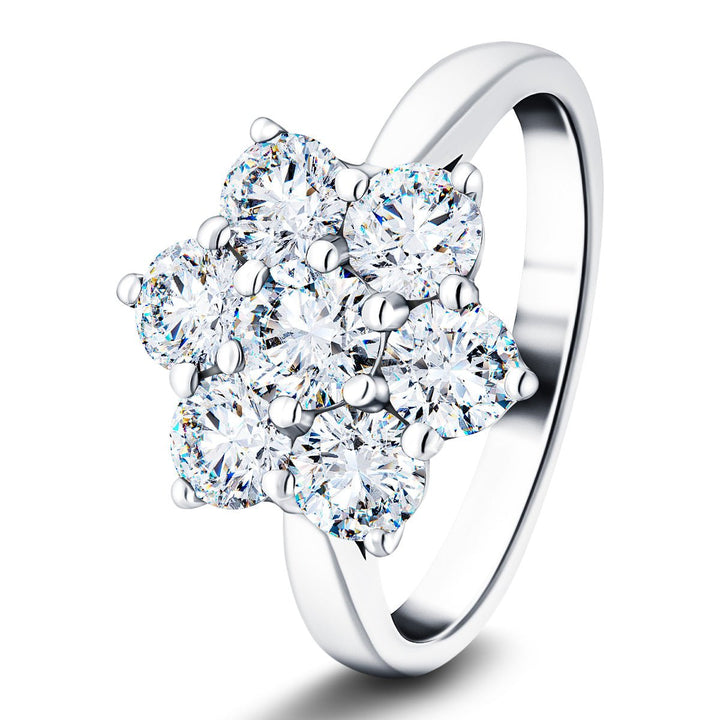
$2,095.00
$5,175.00
Discover the epitome of elegance with the Lab Diamond 3.00ctw Cluster Ring, a striking testament to feminine beauty and sophistication. This exquisite piece features 3.0ctw of real diamonds, each meticulously claw set to showcase their brilliance and D/VVS quality. Crafted… read more
Market Projections & Key Drivers
Here’s what to expect in the coming decade:
More players entering the field. As profitability and consumer demand rise, we will see new manufacturers and brands joining the market.
Product diversification. Beyond classic colorless diamonds, expect more colored stones, fancy cuts, mixed-media combinations, and custom pieces.
Smart tech integration. AI, machine learning, and automation will streamline production, reduce costs, and improve quality control.
Global expansion. Demand will grow in emerging markets as awareness and disposable income increase.
Market size projections. Some forecasts predict the lab-grown diamond market will hit $37.3 billion by 2028 (8.8% CAGR) and reach 19.2 million carats by 2030.
These drivers will fuel a deeper integration of lab-grown diamonds into fine jewelry offerings, especially in engagement rings, fashion jewelry, and limited-edition collections.
How Lab Diamonds Are Impacting the Natural Diamond Sector
As lab-grown diamonds gain market share, the ripples are being felt in the natural diamond world:
Eroding demand. Some buyers are opting for lab alternatives instead of mined stones.
Price compression. The increased supply of lower-cost alternatives puts downward pressure on prices for natural diamonds.
Industry adjustments. Mining operations may consolidate or scale back, and regulation around disclosures and counterfeit detection will become more critical.
Transition in value proposition. Natural diamonds will more strongly lean on rarity, heritage, and branding to justify premium pricing.
According to Morgan Stanley, lab-grown diamonds made up an estimated 14.3% of total diamond supply in a recent year (16 million carats vs. 112 million carats of mined supply), with projections rising to 18% to 21.3% in subsequent years.
Other analysts estimate that lab-grown gems now represent about 20% of the total diamond market, up from almost zero in 2015.
In the U.S., engagement ring trends are shifting fast — by 2024, around 45% of engagement rings sold were set with lab-grown stones.
Across the U.S. jewelry market, the lab-grown segment is dominant. Some studies peg the U.S. share of lab-grown diamond jewelry sales at about 70% globally in 2024.
Isla Blue Lab Grown Oval Diamond Halo Engagement Ring 4.00ctw in Platinum
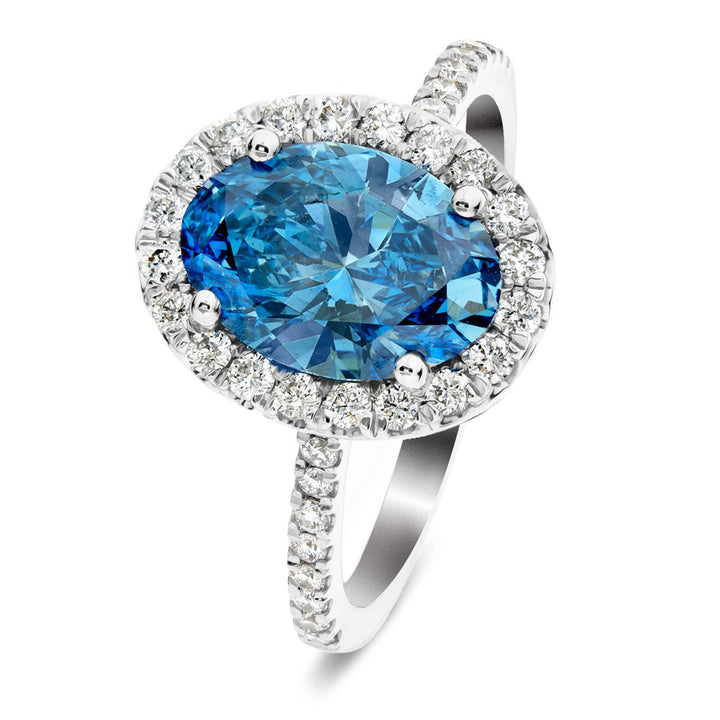
$4,010.00
$9,395.00
The Isla Blue Lab Oval Diamond Halo Engagement Ring is a remarkable fusion of design and craftsmanship. At its heart lies a vivid blue, VS quality lab-grown oval diamond of 3.00ctw, certified by IGI, ensuring its exceptional clarity and color.… read more
A Cost-Benefit Analysis of Lab-Grown Diamond Jewelry
One of the strongest motivators for consumers is cost. Today, lab-grown diamonds are often sold at depths of 80% to 90% discount compared to Please note that although the cost of lab diamonds has fallen, the other costs of manufacture such as design, craftsmanship and precious metals are unchanged meaning that jewelry prices, while lower, cannot match the discounts in lab-grown diamond prices.
This pricing gap gives consumers more flexibility—whether that means selecting a larger stone, choosing a more intricate setting, or buying complementary pieces (earrings, pendants) they would otherwise skip.
Beyond price, lab diamonds offer advantages in:
Environmental impact: No large-scale excavation, less disruption to land and ecosystems.
Traceability: The entire production chain can be monitored and certified.
Value perception: Many buyers feel they gain more “diamond for dollar” with lab-created stones.
If technology continues to improve, we may see the cost delta shrink further, but for now, lab diamonds offer a compelling value proposition.
Innovations and Design Developments
Over the next decade, we’ll see sweeping changes in how lab-grown diamonds are used and showcased:
Radical new cuts and shapes. As control over the growth process improves, designers can push geometric forms, internal patterns, and asymmetry.
Distinctive colored diamonds. Advances in doping and post-growth treatments will generate vivid pinks, blues, greens, and more.
Customization by design. Consumers will expect more input into stone shape, arrangement, and settings—almost like choosing a tailored outfit.
Collaborations with fashion and tech. Expect crossover collections with designers, and smart jewelry that blends gemstones with wearable tech.
As the field matures, lab-grown diamonds won’t just replicate mined designs; they’ll inspire new aesthetics that could only be possible in controlled environments.
Lab Grown Diamond Semi Bezel Tennis Bracelet 5.00ctw D/VVS in 14k Yellow Gold
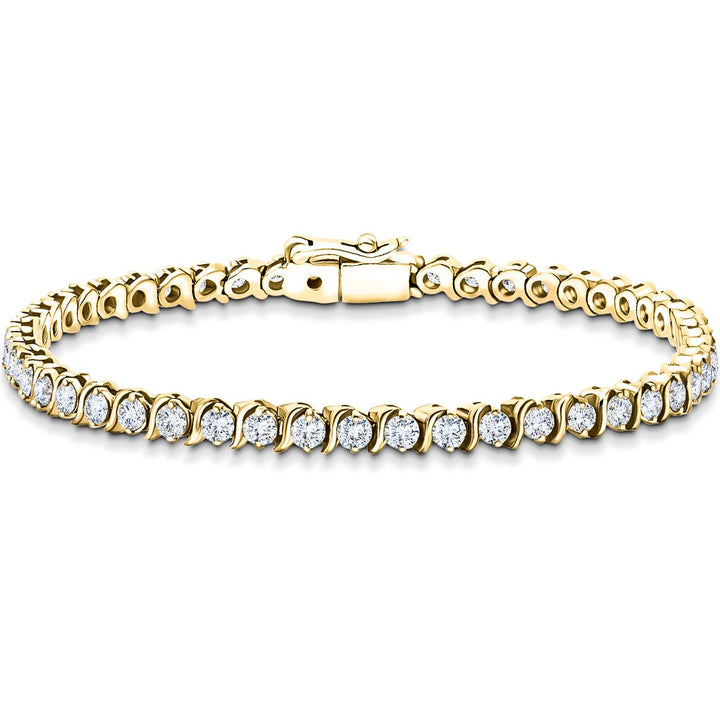
$2,600.00
$4,825.00
Introducing the epitome of elegance: the Lab Diamond Semi Bezel Tennis Bracelet, featuring a stunning 5.00ctw of real diamonds in a D/VVS grade, encapsulated in a sleek semi-bezel setting. Each diamond is meticulously placed along the 7.25-inch 14k yellow gold… read more
Quality Assurance and Regulation
As the market grows, regulation and certification will play a vital role in maintaining consumer trust. Standardized grading systems, certification protocols, and transparent labeling are key to ensuring buyers know exactly what they are purchasing.
Certification from respected bodies like GIA and IGI already provides assurance, but consistent global standards will become even more important as production scales up. Proper tracking and traceability systems will also help buyers feel confident that their jewelry is authentic and responsibly made.
Regulation will not only protect consumers but also support long-term industry stability.
Ethical and Sustainable Considerations
One of the core selling points of lab-grown diamonds is ethics. Over the coming years, this will grow in importance for consumers:
Reduced environmental harm. No digging, no tailings, less water and soil degradation.
Labor practices. With production in controlled environments, supply chains can enforce safer working conditions and avoid conflict or child labor.
Lower carbon footprint. Though energy is required for growth, many labs are already using renewable sources or more efficient methods.
As awareness of supply chain ethics becomes more widespread, lab-grown diamonds will likely enjoy preferential positioning among conscious consumers.
20ctw Lab Grown Diamond Tennis Necklace D/VVS Quality in 18k Yellow Gold
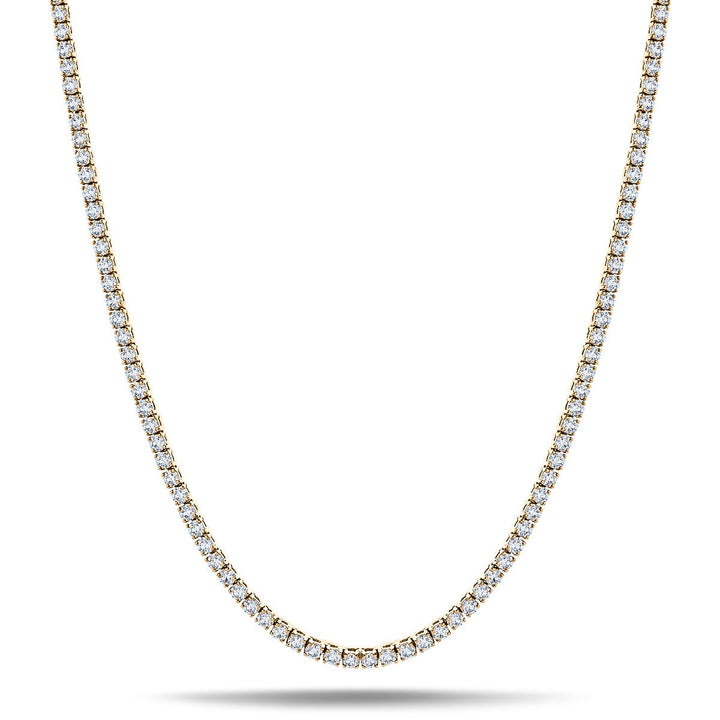
$9,195.00
$19,205.00
Crafted with impeccable attention to detail, this exquisite tennis necklace boasts 20ctw of lab-grown round diamonds of D/VVS quality. Set in lustrous 18k yellow gold, these sparkling diamonds deliver a sense of sophistication. As a handcrafted and it is sold… read more
Lab-Grown Diamond Jewelry: Your Next Choice?
Over the next ten years, lab-grown diamond jewelry will continue its remarkable ascent. Sustainability, affordability, and ethical sourcing are aligning with shifting consumer expectations, creating a perfect environment for growth.
As awareness increases and technology advances, lab-grown diamonds will only become more attractive. They will continue to expand beyond engagement rings and into broader jewelry categories, appealing to a wide range of buyers.
The result is a jewelry market with more choice, more transparency, and more opportunity for consumers to align their purchases with their style and beliefs.
The Future in a Nutshell
Today, the U.S. accounts for a dominant share of the lab-grown diamond market, with some estimates showing it makes up about 70% of global sales of lab-grown diamond jewelry in 2024.
In engagement ring trends, lab-grown stones now appear in 45% of U.S. ring sales — a dramatic leap from just a few years ago.
As production scales and innovation accelerates, lab-grown diamond jewelry will become more accessible around the world, and creative, sustainable designs will continue to challenge traditional norms.
At After Diamonds, we are proud to offer jewelry that reflects these values. Our pieces feature lab-grown diamonds of exceptional quality, crafted with care and designed to be treasured for years to come. Explore our collection today and experience the brilliance of the future of diamonds.
